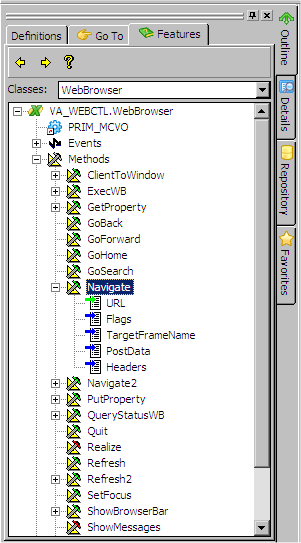

So I tried this from within my BindGrid custom method: Now, There are a couple of functions I was invoking from inline statements by using navigateurl = '' and whatever. In my aspx I have a simple lbl control inside my GridView columns like this:
#CODE ON TIME NAVIGATEURL CODE#
With that, here's what I'm trying to do but failing at it since I'm not sure either where to put this code or maybe another way to call my method that sets the navigateURL. Don't take this personal if you extensively have used (we all have) read this but I need to set the context before I can receive the help I need to figure this thing out from code-behind.
#CODE ON TIME NAVIGATEURL HOW TO#
Anyway, sorry, today is just a bad day for me so I felt to put up my rant first so that I do not get rep lies on how to just do this using. I don't care if it is easier, the point is, that is clearly spaghetti and you cannot debug that sh%% at all.you dont know what order sh** is processing etc, when it's not coded from code-behind. My Rant: I DO NOT want to use inline code on the mark-up side using. Once assigned, a session variable value is available in data views of all application pages.Ok, I'm trying to set the navigateURL for my label control in my GridView from code behind. If the action has not been executed, then the value of parameter is null. The parameter named is equal to the value assigned by SQL action Suppliers / Actions / ag1 (Grid) / a100 – SQL | Show Supplier Products. If the FilterBy argument is not specified in the URL of the page, then the value of parameter is equal to NULL. The filter expression specified in the Products / Views / grid1 view node is evaluated whenever users interact with the data on the Products page. Notice the FilterBy=Supplier fragment in the address bar. At that time the relevant Supplier ID has been stored in the session variable by application server.Ĭlick OK and the web browser will navigate to Products page. The browser alert window will be displayed. Navigate to Suppliers page and open a context menu of any supplier. The entire list of products will be displayed as if the project has never changed. The hierarchy of the Products data controller will change.Ĭlick Browse and navigate to Products page. 'The supplier of these products is "' + '".' Where SupplierID = - display a "view message" in the web browser

tag the client-side view to render explanation once Select New Business Rule option and enter the following properties of the new rule.

Right-click the Products / Business Rules node. Propertyįilter is null = 'Suppliers' and SupplierID = entire filter expression is embedded in the WHERE clause of SELECT statement created by the application framework at runtime. Select Products / Views / grid1 view node on the Controllers tab in Project Explorer.Įnter the Filter Expression and save the changes. The page has to provide an explanation that the list of products is filtered to avoid any confusion on a part of user. The filtering will only take place if FilterBy=SupplierID is detected in the URL of the Products page. Let’s limit the list of products rendered on the Products page to those that have their SessionID column value equal to the value stored in the session variable. Now the application can make use of the session variable SupplierID and URL variable FilterBy. The Suppliers data controller hierarchy will look as follows Set = 'Products.aspx? FilterBy=Suppliers' Select New Action option.Įnter these property values and click OK to create the new action. Start Project Designer and right-click Suppliers / Actions /ag1 (Grid) node in the Project Explorer on Controllers tab. SQL Business Rules can access both types of variables and manipulate their values.Ĭonsider the the following example that demonstrates creation and use of a session variable in the Northwind sample. There are also the client-side variables that are typically passed as URL arguments when users navigate from one page to another. The variables exist on the server for a duration of the browsing session and expire when user closes a browser or logs out. A session variable is usually initialized when a user signs in or when a certain action is performed. Web applications may maintain a collection of session variables on the server and use the variables when a user navigates between pages.


 0 kommentar(er)
0 kommentar(er)
